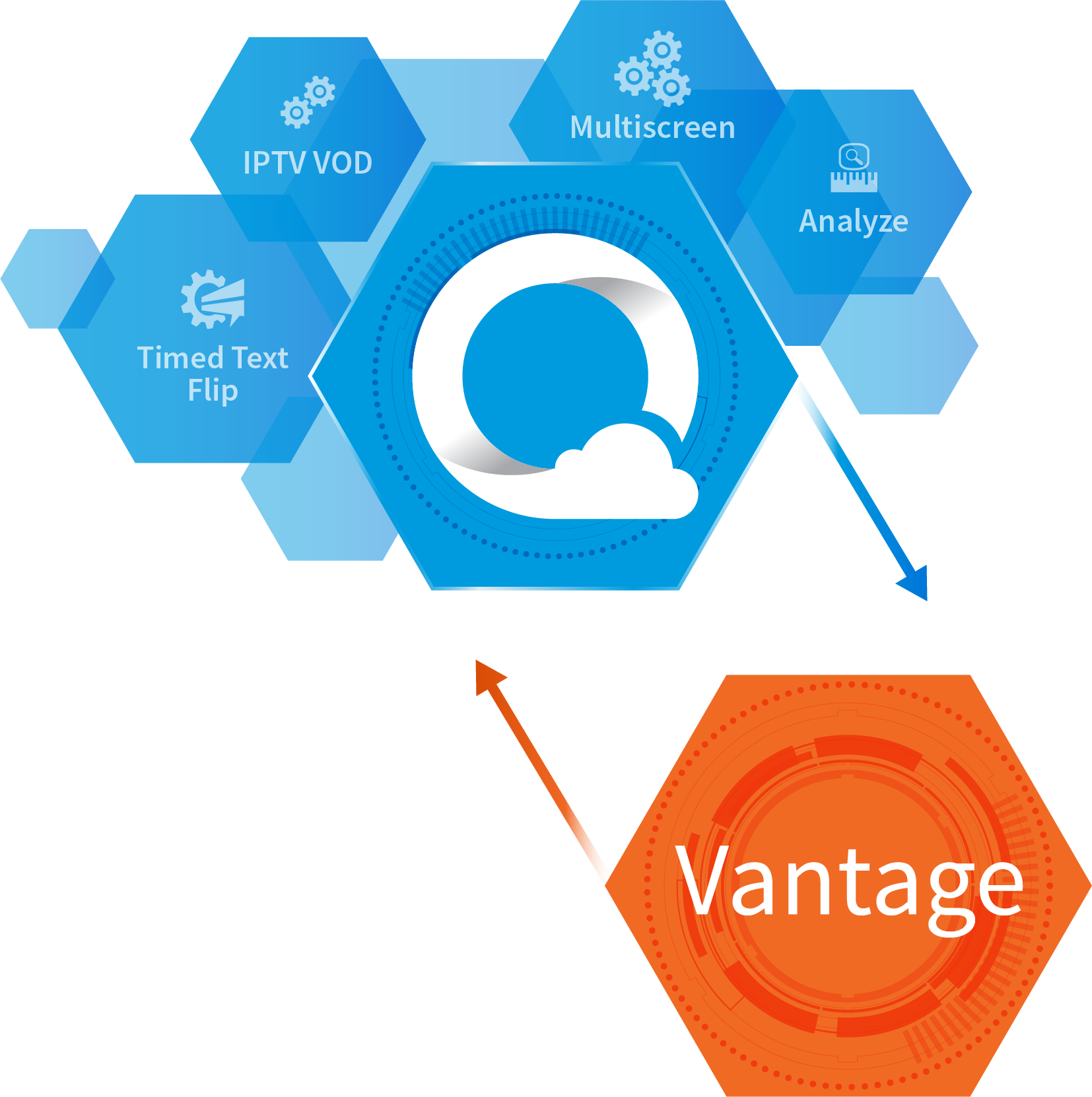Telestream Advances Cloud Workflows at 2019 NAB Show
LAS VEGAS—For the 2019 NAB Show, Telestream has announced two new products that will take advantage of advances in hybrid cloud and virtualized workflows.

Vantage Cloud Port, which comprises v8.0 of Telestream’s Vantage media processing platform is a new feature that streamlines hybrid cloud/on-prem media workflows, creating a seamless environment that optimizes processing based on the physical proximity of the processing center, and provides this service with predictable SaaS pricing.
“We took the underlying core Vantage engines for a lot of the different actions that Vantage can execute, and wrapped them into this microservices layer that makes it very easy for us to orchestrate spinning these things up in machine instances that we manage in our cloud customer’s environment,” said Ken Haren, marketing director for Telestream.
Haren adds that some Telestream customers look to 2019 as the year when they plan to move their entire media supply chain to the cloud and that Vantage Cloud Port gives an easy on ramp to those customers reluctant to moving their existing workflows to the cloud.
“You want to preserve some capabilities on prem, and this enables our customers to have that seamless gate between their on-prem and cloud environments,” he said.
Combining these workflows and processes into one seamless environment also gives Telestream customers the advantage of one-stop SaaS pricing, according to Scott Murray, vice president of product management at Telestream.
“When utilizing the cloud, it’s very important to have pricing that is predictable and competitive,” Murray said. “When building a Vantage workflow, any actions set to ‘cloud mode’ indicate a per- minute processing price. This transparent a la carte model translates customer requirements into easily understood usage-based pricing.”
OPTIQ
Telestream will also introduce OptiQ, a new one-click channel creation solution for cloud environments.
Jointly developed with a European telecoms service provider, Optiq allows users to create more channels in less time, according to Telestream. Once spun up, the channels offer as standard integrated monitoring throughout, and the ability to switch between multiple sources (live or file- based). The “pay as you go” pricing structure gives customers the flexibility to accommodate unforeseen fluctuations in demand while aligning such costs to revenues, meaning customers don’t have to pre-spend to ensure they meet demand.
This ability to spin up new channels with sophisticated monitoring and switching features will allow service providers and channel aggregators the capacity and scalability to be better prepared to offer instantaneous channels for short-term events.
“OptiQ is a merging of the entire Telestream skill set around live streaming, workflow, cloud, integrated monitoring, containers and much more,” said Scott Puopolo, Telestream CEO. “It is an ambitious project and the intention is that the initial release will be a SaaS offering so we can rapidly evolve the solution in the early pilots and fine-tune it before committing to an on-premise offering.”
OptiQ uses containers and multiple orchestration systems, which are prioritized based on industry dynamics and customer feedback. The containers are modular Linux-based “elements” (such as encoders, packagers, origin servers and monitoring probes), that can be instantiated in a cloud environment by an orchestration system, then stitched together and configured automatically to make a real-time-monitored live streaming channel.
A new Telestream Channel Orchestrator will enable channel design, manage the orchestration process, connect and configure the elements, and handle redundancy and self-healing capabilities.
Telestream says OptiQ provides a migration path to hybrid cloud/on-premise capabilities for content providers that do not have the skill-set to embrace cloud. It also gives customers the freedom to not be tied to a single cloud provider due to concerns over migrating away or de- risking their current provider. Telestream says OptiQ will support most major cloud providers, in addition to on-premise data centers at a later stage.
Get the TV Tech Newsletter
The professional video industry's #1 source for news, trends and product and tech information. Sign up below.
Tom has covered the broadcast technology market for the past 25 years, including three years handling member communications for the National Association of Broadcasters followed by a year as editor of Video Technology News and DTV Business executive newsletters for Phillips Publishing. In 1999 he launched digitalbroadcasting.com for internet B2B portal Verticalnet. He is also a charter member of the CTA's Academy of Digital TV Pioneers. Since 2001, he has been editor-in-chief of TV Tech (www.tvtech.com), the leading source of news and information on broadcast and related media technology and is a frequent contributor and moderator to the brand’s Tech Leadership events.

